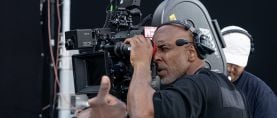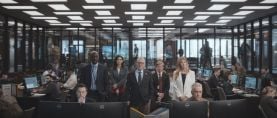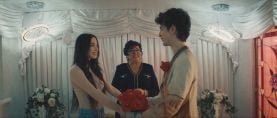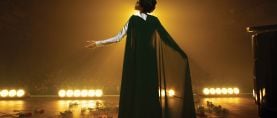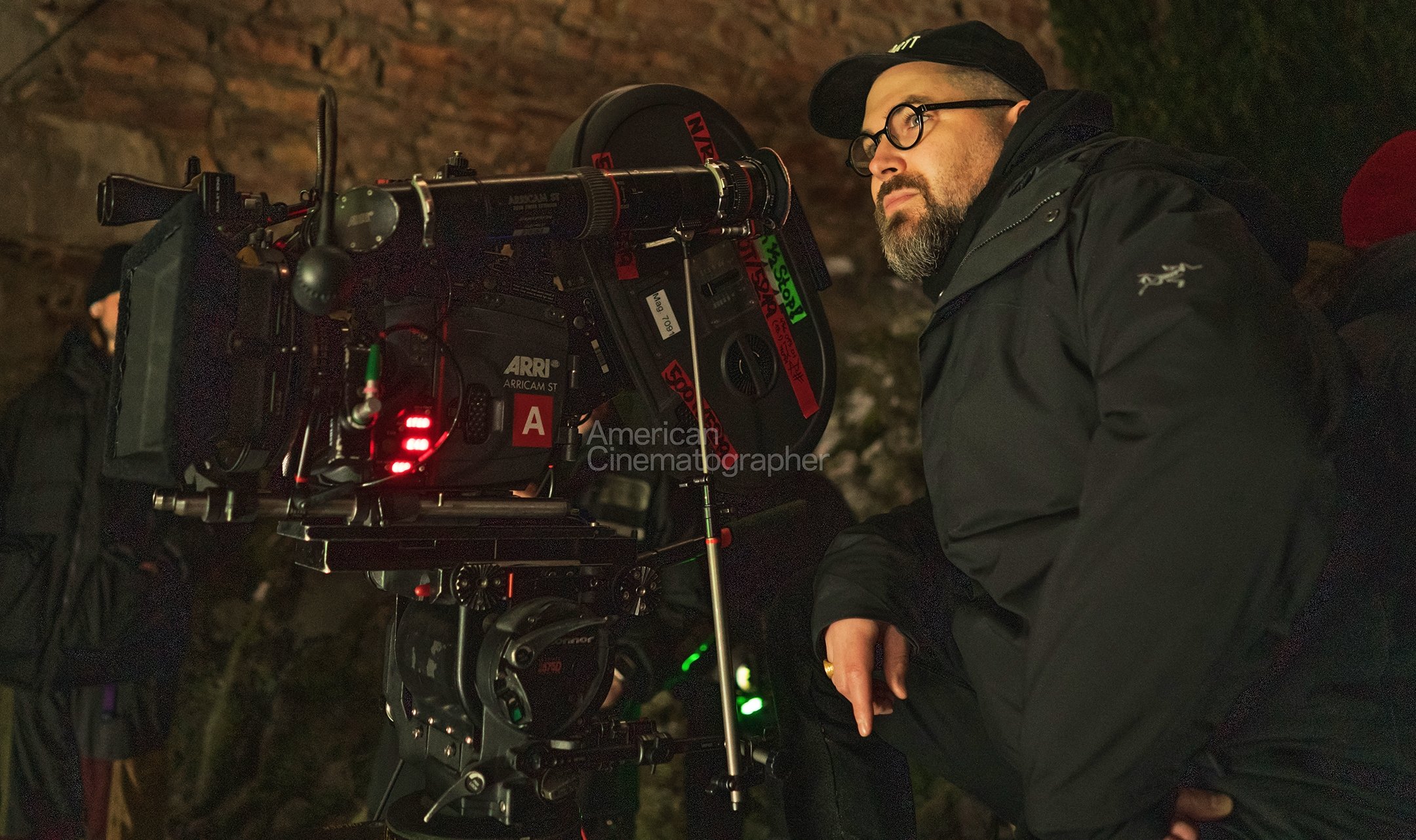
Director Robert Eggers on Nosferatu
“I didn’t study photography and I didn’t go to film school, so while I’ve learned a lot over the years, Jarin is always going to be much savvier about the tech.”
Unit photography by Aidan Monaghan, courtesy of Focus Features.
American Cinematographer: Your personal history with Nosferatu dates all the way back to your childhood. What was your initial reaction to the original 1922 film directed by F.W. Murnau?
Robert Eggers: I was maybe 9 when I first saw it, and it was very much Max Schreck’s performance, and the haunting atmosphere of the film, and how it distills the Dracula story into a simple fairy tale [that made an impression on me]. The VHS version I watched over and over was probably made from a crappy 16mm print, so you couldn’t see [Schreck’s] bald cap and greasepaint — he became a real vampire. So, while I prefer to watch the fully restored version, which allows you to see the intentions of Murnau and his collaborators better, [the flaws in the VHS version] made it feel more real. Back then, when I was a kid, it felt almost like a found-footage movie to me.
You teamed with one of your high-school friends, Ashley Kelly-Tata, to create a version of Nosferatu as a play, complete with black-and-white sets, costumes and makeup. How was that production received by your classmates?
I think people thought it was cool. It was certainly different — it was silent, we had music playing, and supertitles were being projected. A local theater owner, Ed Langlois, saw the play and invited me to do a more professional version at his theater. That show was quite successful for a production staged at a small-town New Hampshire theater. It really changed my life and [set the course for] my career.
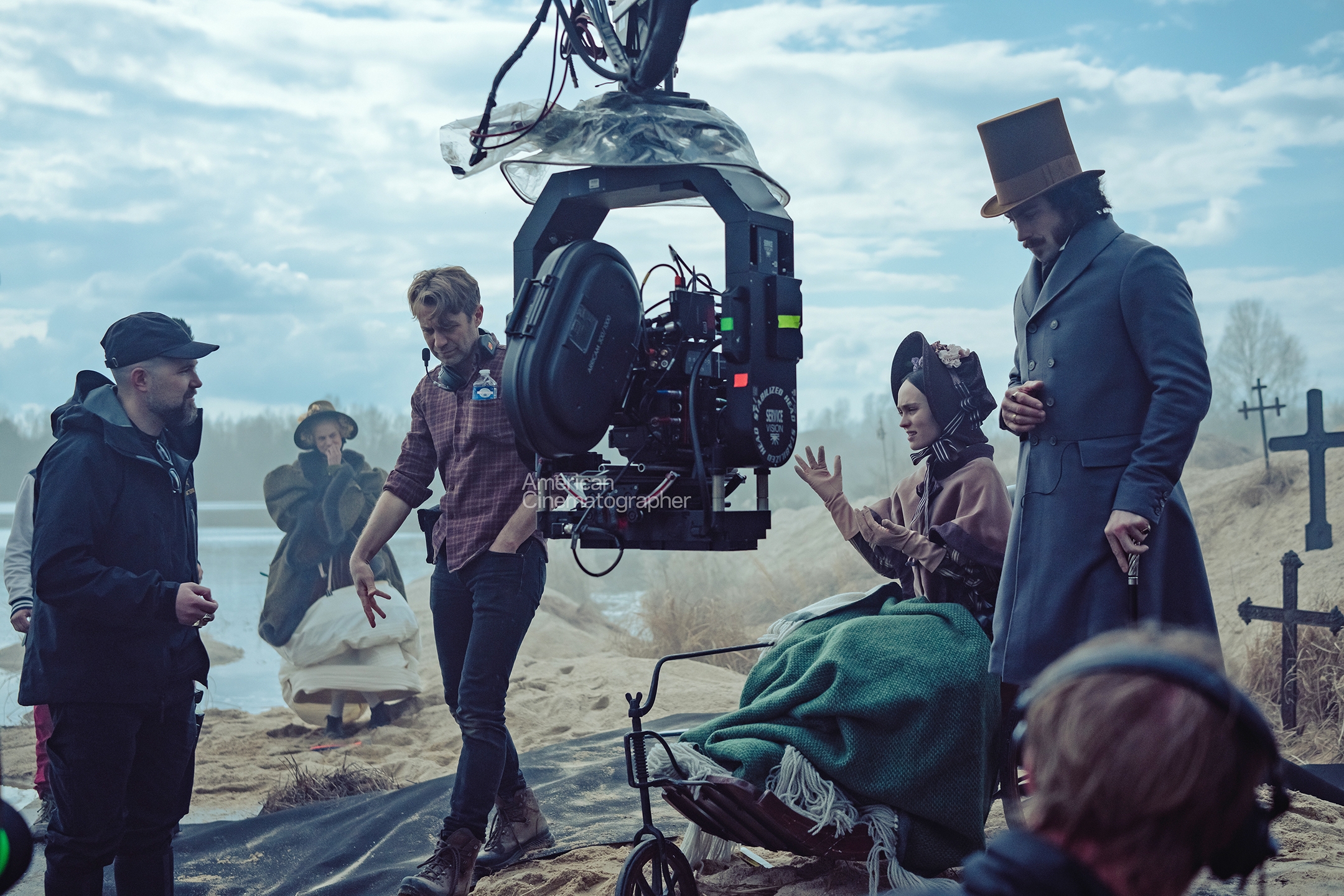
As part of your preparation for the Nosferatu
feature, you wrote a novella. How did that process help you formulate your ideas for the movie?
I’m always sifting through ideas during my ‘notes’ phase, but I felt I needed to grapple with some big things. Albin Grau, the [original film’s] producer and production designer, was a practicing occultist, who I think actually believed in vampires — or psychic vampires, anyways. So, I was trying to understand what he was thinking about, and how that would have influenced the story. I also wanted to figure out what our Van Helsing character, von Franz, might have been thinking during his time period, with his understanding of hysteria and medicine. Plus, [I was examining] the folklore on Transylvanian vampires of the period and wondering how to create a mythology consistent with all of that stuff.
Most importantly, I was thinking, ‘Who are these characters, and how can I build out their backstories and make them real people?’ I also wanted our version to be Ellen’s story. The previous Nosferatu films start out as Thomas Hutter’s story, or Jonathan Harker’s, and then become Ellen’s story, but I wanted it to always be her story. Our film’s prologue comes from the work I did with the novella.
It took many years for you to get this film into production, but I’m assuming the lengthy gestation period allowed you to plan carefully, and that the success you had with your earlier films gave you more clout as a producer, and access to more resources.
The intention of what I was trying to do did not really change, but my ability to execute [that vision] changed a lot — due to the clout, as you say, to do the film my way, and also in terms of having a better technical ability to communicate [and achieve] what was in my imagination. That wouldn’t have been the case if I’d done the film 10 years ago.
How would you describe your collaborative relationship with cinematographer Jarin Blaschke?
I went to drama school, so the only thing I have certification in is working with actors, but I earned my living during my 20s and 30s in the art and costume departments. So, my superhero powers, in terms of communication and what I’m asking for, are in those three areas. I didn’t study photography and I didn’t go to film school, so while I’ve learned a lot over the years, Jarin is always going to be much savvier about the tech. It’s only since Nosferatu that I even feel comfortable holding a camera or moving the tripod.
Jarin and I have grown together as people, as fathers, as filmmakers — we’ve been working together since I was 25. I know that with some of my director colleagues, they design the shots and the DP lights them. With Jarin and me, it’s very collaborative. On this film, particularly when we were discussing simple scenes without a lot of dialogue, we would be in my apartment in Prague, working together to figure out what the shots would be like, and pitching each other on different [approaches] — taking away the best ideas. From there, Jaren would do small thumbnail [drawings] that he’d send to our storyboard artist, Adam Pescott, who would then create very meticulous storyboards.
In scenes that had a whole lot of dialogue, I’d be working with the actors in a rehearsal room, and Jarin would be there [framing things] with his phone, trying different things. Sometimes I might grab the phone, and we’d both be trying to find ways to make the staging more elegant.
What are your interactions like with other department heads, like production designer Craig Lathrop and costume designer Linda Muir?
I’ve been working the longest with Jarin and my editor, Louise Ford, but I’ve also been working with [other members of my team] for many years, so we all know each other quite well. Be-cause Nosferatu took 10 years to get made, the look books I created for the different locations, characters, costumes and everything else were incredibly dense and detailed. But collaborators like Craig and Linda can take my ideas unimaginably further with their own research and the expertise they bring to their own departments. I can be a bit more specific about certain nerdy things with Linda, because the [human] scale of her work as the costume designer allows us to obsess over things like buttons. If I did that with Craig, it would drag me down a hole to hell — in his department, an adjustment might require us to tear down the sets into annoying pieces or put those pieces on hinges so we can move the camera around. They know what I like, though, so there aren’t usually a lot of disagreements — it tends to be more about pushing our aspirations higher through the collaboration.
AC previously covered Eggers’ films The Witch, The Lighthouse and The Northman, all photographed by Blaschke.
You’ll find our complete production story on Nosferatu — with Blaschke detailing his photographic approach — in the January 2025 issue of AC.
The cinematographer also participated in an upcoming episode of ASC Clubhouse Conversations, which will be posted shortly.
